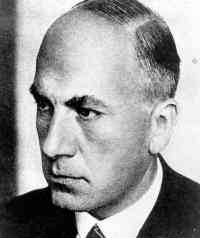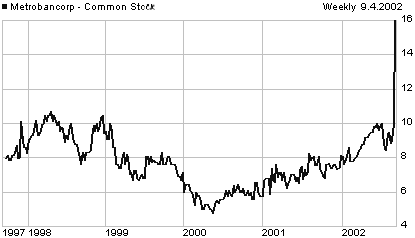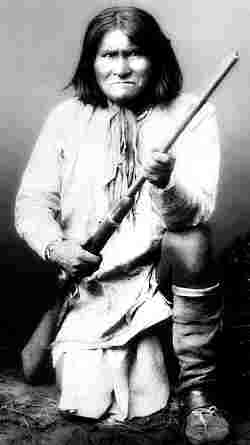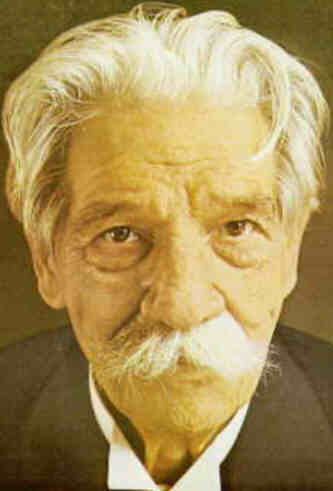Births which occurred on
a 04 September:
1957 The Ford Edsel car
^top^
The Ford Motor Company proclaimes
this day “E-day” in celebration of the Edsel’s introduction,
five years after its conception. It would take only three more
years for Ford to discontinue the Edsel line. Despite careful
market research that indicated consumers wanted more horsepower,
tailfins, three-tone paint jobs, and wrap-around windshields,
the fickle public had changed its mind by 1957. The Edsel’s
low price and V-8 engine simply failed to overcome its “ugly
horse-collar grille.” Overwhelmed by negative press and lack
of sales, the Edsel faded into history as Ford’s famed “ugly
duckling.” Ironically, the low numbers produced have made the
Edsel a valuable collector’s item in recent years. |
1932 Carlos Romero Barceló, político puertorriqueño.
1929 Thomas Eagleton
(Sen-D-Mo, Dem VP candidate 1972, quickly dumped when it became know
that he had been treated for mental disease, pro-life)
1920 Craig Claiborne food columnist (NY Times Cookbook)
1917 Henry Ford II automaker (Ford)
1872 Darius Milhaud Aix-en-Provence France, composer (Maximilien)
1920 Maggie Higgins, the first woman to win the Pulitzer Prize
(1951) for international reporting, for her work in Korean war zones.
1920 Craig Claiborne, food critic and cookbook author.
1908 Richard Wright, US novelist best known for Native Son,
also wrote Uncle Tom's Children.
1906 Max Delbrück, biólogo germano-estadounidense, Premio Nobel
1981.
1905 Mary Renault (Mary Challans), author who wrote about her
wartime experiences in The Last of the Wine and The King Must
Die.
1895 Melchor Fernández Almagro, historiador español.
1891 Fritz Todt,
the chief designer of the German autobahn, in Pforzheim, Germany
^top^
Todt’s creation would the first
true system of national superhighways, and was held up by Germany
as a proud symbol of the modernity of their engineering. However,
the autobahn system emerged from World War II as a battered
version of its earlier self. The newly formed nations of East
and West Germany set about repairing the old system, though
at different rates. Booming increases in motor traffic propelled
extensions and enhancements in West Germany, while improvements
were more gradual in East Germany. Over the years, the autobahn
regained its status as a model expressway and became famous
for its nonexistent speed limit.
Fritz Todt, would be appointed
General Inspector for German Highways on 5 July 1933. His primary
assignment: to build a comprehensive autobahn system. Todt,
a civil engineer who was a proponent of a national highway system
as a means of economic development, was handpicked for the position
in 1932 by Adolf Hitler. The two men were close friends, and
Todt remained a Nazi party member throughout World War II.
Every aspect of Autobahn construction — its
design, aesthetic ("to harmonize with the German landscape"),
and model role in National Socialist labor relations — was stamped
with Todt's personality. As was his other great achievement,
the building of the massive network of bunkers and fortifications
known as the West Wall.
By 1936, 100'000 kilometers of
divided highways had been completed, leaving Germany with the
most advanced transportation system in the world. Todt estimated
in a 1936 speech that "170'000'000 cubic meters of earth have
been moved. This would fill a line of trucks extending around
the earth four times." He concluded his speech with an exhortation
to the German people typical of Nazi party propaganda, "They
are roads unequaled anywhere else in the world in their technical
excellence and beauty. Is this a work of technology? No! Like
so much else, it is the work of Adolf Hitler!" However in Todt
last years of life he had disagreements with Göring and
even with Hitler, so that some suspect that Todt's death in
an airplane crash on February 8, 1982, may have been provoked.
The autobahns were, in fact,
the envy of the industrialized world and a source of both anxiety
and awe for Europeans. A Danish newspaper declared, "They are
the expression of a national energy that compels the greatest
admiration." What few suspected was that the German road system
was the first step to their conquest of Western Europe, as the
autobahns allowed the Germans to move troops and personnel faster
and in greater numbers than anyone could have imagined. The
ease with which the German army moved into France owes much
to its facility to mobilize and shift troops faster than the
French could.
Todt became a national hero for
his creation. The autobahn inspired US President Dwight Eisenhower
to foster a similar American interstate highway system. Having
been in Germany during the war, he returned to the States deeply
convinced that good highways were directly linked to economic
prosperity.
 BIOGRAPHIE VON FRITZ TODT,
Ingenieur, NS-Politiker
BIOGRAPHIE VON FRITZ TODT,
Ingenieur, NS-Politiker
1891 4. September: Fritz Todt wird als Sohn eines Fabrikanten
in Pforzheim geboren.
1910 Als Einjährig-Freiwilliger dient er in Karlsruhe.
1911 Er beginnt sein Ingenieurstudium in München.
1914-1918 Teilnahme am Ersten
Weltkrieg als Offizier und Flugzeugbeobachter.
1920 Abschluß des Studiums in Karlsruhe.
1921-1933 Er arbeitet zuerst an Wasserkraftanlagen, später
im Straßenbau für die Baufirma Sager and Woerner.
1922 Er tritt in die Nationalsozialistische Deutsche
Arbeiterpartei (NSDAP) ein.
1931 Er wird Oberführer der Sturmabteilung
(SA) im Stabe Ernst
Röhms und Fachberater im Amt für Wirtschaftstechnik
und Arbeitsbeschaffung der NSDAP.
1932 Todt promoviert über "Fehlerquellen beim
Bau von Landstraßendecken aus Teer und Asphalt".
1933 Nach der Ernennung Adolf
Hitlers zum Reichskanzler wird Todt Generalinspektor für
das deutsche Straßenwesen. Seine Behörde erhält
den Status einer Obersten Reichsbehörde außerhalb
der Organisation der Reichsministerien. Er ist verantwortlich
für den Bau der Reichsautobahnen und Hitler direkt unterstellt.
Er wird Leiter des Hauptamts für
Technik in der Reichsleitung der NSDAP.
1938 Als Generalbevollmächtigter für die Regelung
der Bauwirtschaft ist er verantwortlich für das gesamte
Bauwesen im Reich.
Beginn des Baus des Westwalls
als Befestigung entlang der Westgrenze des Reichs. Hierfür
schafft Todt durch das Zusammenwirken von Bauverwaltung, privaten
Firmen und Reichsarbeitsdienst die Organisation Todt.
Während des Kriegs werden immer mehr Zwangsarbeiter
herangezogen. Hauptsächliches Einsatzgebiet der bis zu
800.000 Arbeiter sind Instandhaltung und Wiederherstellung kriegswichtiger
Anlagen.
1940 Ernennung zum Reichsminister für Bewaffnung
und Munition. Damit ist er zuständig für die Kriegswirtschaft
und für den Bau des Atlantikwalls entlang der niederländischen,
belgischen und nordfranzösischen Küsten.
1941 Generalinspekteur für Wasser und Energie. Trotz
Konflikten mit Hermann
Göring und mit der Wehrmacht bleibt seine Wertschätzung
als unverzichtbarer Organisator bei Hitler ungebrochen. Herbst
Nach einer Inspektionsreise an
der Ostfront fordert Todt von Hitler erfolglos Maßnahmen
zur besseren Versorgung der Wehrmacht. Zunehmende Zweifel an
der Möglichkeit, den Krieg zu gewinnen, führen zu
Auseinandersetzungen auch mit Hitler.
1942 8. Februar: Fritz Todt kommt bei einem Flugzeugabsturz
nahe dem Führerhauptquartier bei Rastenburg (Ostpreußen)
ums Leben. Es gibt Vermutungen, er sei einem Anschlag Hitlers
zum Opfer gefallen.
Postum wird ihm als erstem Träger
der Deutsche Orden verliehen. Sein Nachfolger als Rüstungsminister
wird Albert
Speer |
1889 Stepanov,
mathematician
1889 Angel González Palencia, arabista y orientalista español.
1888 George Eastman patents the first roll-film camera and registers
"Kodak"
1888 Otto Schlemmer, German painter, lithographer, engraver, photographer,
sculptor, teacher, coreographer, dancer, composer, designer of graphics,
bookcovers and furniture. He died on 13 April 1943. — MORE
ON SCHLEMMER AT ART “4” SEPTEMBER
— Große
Biographie (auf Deutsch) — LINKS
— Half
Length Figure turned to right — Figure
Group on Yellow Paper — Self-Portrait,
Prellerstrasse Studio (multiple exposure photo) — Figure
on Pink Paper
1888 George Eastman received a patent for his roll-film camera,
and registered his trademark: Kodak.
1885 John Leslie Palmer, co-editor of Who
Cares for America's Children?
1875 Kirby Rollin; in Galva, IL. He would grow up to be a Pulitzer
Prize winning satirist of Wall Street and big business, as well as of
a host of other targets.
1870 La IIIème République Française
A la nouvelle de la défaite des
troupes de Napoléon III à Sedan, l'empereur prisonnier à Whilhemhöhe,
le peuple de Paris indigné renverse le gouvernement impérial.
La république est proclamée. Le règne de Napoléon III qui s'était
fait proclamer Empereur par plébiscite en 1852, se termine ainsi
dans la défaite et la révolte, après avoir commencé dans la
confusion en 1848. C'est fois, il n'y a pas eu la moindre effusion
de sang.
— - 3rd French republic proclaimed
as they overthrow their emperor (prisoner of the Prussians),
a government of national defense is formed.
Le 4 septembre 1870, les Parisiens
apprennent que Napoléon III a été fait prisonnier par les Prussiens
à Sedan.
Après Lyon et Marseille, la capitale se hâte de proclamer la
République.
Quelques mois plus tôt, l'Empire
libéral de Napoléon III était sorti renforcé du plébiscite du
8 mai, qui lui avait donné 7.336.00 oui contre 1.560.000 non.
A Paris, à la différence du reste du pays, une majorité républicaine
s'était prononcée contre le régime.
Après la déclaration de guerre
à la Prusse, le 19 juillet 1870, il s'était trouvé certains
républicains pour souhaiter qu'une prompte défaite consacre
la ruine du régime et hâte l'avènement de la République. C'est
ainsi que Le Rappel, un journal appartenant aux fils
de Victor Hugo, en exil à Jersey, écrivait noir sur blanc: "Le
danger le plus sérieux, c'est celui de la victoire. L'Empire
fait le mort. Les Prussiens battus, il ressuscitera".
La défaite de Sedan allait combler au-delà de toute espérance
les voeux de ces drôles de patriotes.
Une République issue de la défaite
Au Palais-Bourbon, les députés du Corps législatif se réunissent
dans la nuit du 3 au 4 septembre. Ils dédaignent de confier
la régence à l'impératrice Eugénie, confinée au palais des Tuileries,
et s'interrogent sur la conduite à suivre. Dans le petit groupe
républicain, plusieurs députés se préparent à un illustre destin.
Parmi eux, Jules Favre, Jules Grévy, Jules Simon et Jules Ferry,
qui fonderont la "République des Jules".
Il y a aussi Adolphe Crémieux et surtout Léon Gambetta, superbe
orateur de 32 ans.
Une foule de Parisiens envahit
bientôt le Palais-Bourbon et exige l'instauration de la République.
Les députés craignent d'être débordés par l'insurrection. Jules
Favre leur suggère alors de proclamer eux-mêmes la République
à l'Hôtel de ville de Paris, comme aux plus beaux jours de la
Révolution de 1789. Deux colonnes de députés et de simples citoyens
se rendent donc à l'Hôtel de ville, où elles ont été devancées
par un groupe d'agitateurs révolutionnaires, jacobins ou socialistes
(Delescluze, Blanqui, Flourens,...).
Pour séduire et rassurer la foule, Jules Ferry a l'idée de constituer
un gouvernement composé de députés républicains de Paris. C'est
ainsi que Léon Gambetta et Jules Favre proclament la République
au milieu d'une liesse générale quelque peu surréaliste en regard
de la situation militaire du pays.
Beaucoup de Parisiens croient naïvement que la déchéance de
l'empereur et l'avènement de "Marianne" rendront
les Prussiens plus accommodants. Certains imaginent au pire
un sursaut général comme aux temps héroïques de Valmy.
La résistance de l'armée de Bazaine à Metz
leur donne quelques motifs d'espérer.
Le "gouvernement de la Défense nationale" est placé
sous la présidence du gouverneur militaire de la place de Paris,
le général Louis Trochu, un conservateur timoré, "Breton,
catholique et soldat", selon ses propres termes. Dès
le 19 septembre, le nouveau gouvernement doit faire face à l'encerclement
de Paris par les troupes ennemies.
Le député Adolphe Crémieux,
un généreux septuagénaire, est envoyé à Tours comme délégué
du gouvernement provisoire pour conduire le reste du pays malgré
le siège de Paris. Mais il se révèle vite insuffisant à la tâche.
Le 7 octobre, le fougueux Gambetta (32 ans), ministre de l'Intérieur,
s'enfuit à son tour de Paris à bord d'un ballon. Sitôt à Tours,
il organise une armée en vue de secourir la capitale et de mener
une "guerre à outrance".
Son initiative recueille quelques éphémères succès mais elle
inquiète les populations rurales qui rêvent surtout du retour
à la paix. Les troupes hâtivement rassemblées par Gambetta sont
sans difficulté battues par les Prussiens après la reddition
honteuse de l'armée de Bazaine,
à Metz.
De leur côté, affamés par un siège impitoyable, les Parisiens
tentent dans un effort désespéré une "sortie torrentielle"
à Buzenval, le 20 janvier 1871. Elle s'achève par une piteuse
retraite.
Adolphe Thiers
(73 ans), vieux député conservateur doté d'un très grand prestige,
entreprend une tournée des capitales européennes en vue d'obtenir
une intervention militaire en faveur de la France. Il se heurte
partout à un refus poli, au grand soulagement du chancelier
Bismarck.
L'armistice est finalement signé par Jules Favre le 28 janvier
1871 pour une durée de quatre semaines. Bismarck veut ainsi
donner le temps aux vaincus d'élire une assemblée nationale.
Il a besoin en effet que le traité de paix définitif soit entériné
par une autorité légitime afin de ne pas être plus tard contesté.
Dix jours plus tôt, le 18 janvier, les envahisseurs ont
proclamé triomphalement l'
Empire d'Allemagne dans la galerie des glaces de Versailles.
La France aspire à la tranquillité
Le 8 février, les élections générales amènent à la nouvelle
Assemblée une majorité favorable à la paix. Les ruraux des provinces,
peu au fait du siège de Paris et des événements militaires,
ont massivement manifesté leur volonté d'en finir au plus vite
avec la guerre en reportant leurs suffrages sur les notables.
C'est ainsi que se révèle à l'Assemblée une majorité écrasante
de monarchistes.
Pas moins d'un élu sur trois est noble! Mais ces députés monarchistes
sont divisés entre partisans du comte de Paris, petit-fils de
Louis-Philippe 1er, du comte de Chambord, petit-fils de Charles
X, et de Napoléon III, empereur déchu.
Paris étant assiégé et trop agité au goût de l'Assemblée nationale,
celle-ci se réunit au Grand Théâtre de Bordeaux avant de se
transférer à Versailles. Le gouvernement de Trochu lui remet
sa démission et, le 17 février, l'Assemblée désigne Adolphe
Thiers comme "chef du gouvernement exécutif de la République
française" en attendant de statuer sur la nature du régime
futur: monarchie ou république.
Thiers négocie la paix
Il appartient à Adolphe Thiers
de ratifier les préliminaires de paix avec l'Allemagne. Le 21
mars, il se rend avec Jules Favre au chateau de Versailles,
transformé en résidence secondaire par l'empereur Guillaume
1er, le chef d'état-major von Moltke et le chancelier Bismarck.
Pour les Allemands, la cession des deux départements alsaciens
est une revendication incontournable, l'Alsace étant une ancienne
terre du Saint empire
germanique conquise deux siècles plus tôt par Louis XIV.
Bismarck y ajoute une indemnité de guerre chiffrée à six milliards
de francs de l'époque (une somme colossale) ainsi que la cession
de la Lorraine du nord et le droit pour les vainqueurs et l'empereur
de défiler triomphalement à Paris.
Thiers cède Metz et la Lorraine
du nord, bien que ces terres de culture française n'aient aucun
motif d'appartenir à l'Allemagne. Bismarck serait disposé à
céder sur cette revendication, considérant avec justesse qu'elle
empêchera à jamais toute réconciliation entre les deux pays.
Mais le chef d'état-major von Moltke y tient absolument et se
montre intransigeant.
L'indemnité est réduite à cinq
milliards (en bon bourgeois, Thiers confiera plus tard qu'il
est toujours possible de récupérer des provinces perdues mais
que les milliards envolés le sont pour toujours!). Il est convenu
que les troupes d'occupation se retireront à mesure que sera
versée l'indemnité.
Au terme d'épuisantes négociations, Thiers obtient que la place
forte de Belfort, qui a résisté au-delà
de l'armistice, soit conservée à la France en échange du droit
pour les Allemands de défiler à Paris à partir du 1er mars 1871
et jusqu'à la ratification du traité par les élus français.
Sitôt l'accord en poche, Thiers et Favre se rendent à Bordeaux
et obtiennent de l'Assemblée nationale qu'elle ratifie dans
l'urgence les préliminaires de paix. C'est chose faite le dimanche
2 mars, à la grande irritation de l'empereur, de von Moltke
et Bismarck.
Les Allemands n'ont eu en effet que le temps de faire défiler
quelques bataillons d'avant-garde dans la capitale endeuillée,
devant les statues de la place de la Concorde recouvertes d'un
voile noir.
Les Parisiens, énervés par un
siège épuisant, manifestent avec violence leur désespoir face
à cette humiliation qui s'ajoute à la défaite. Le 18 mars, Thiers
va se saisir de ce prétexte pour évacuer la capitale.
Il entamera sa reconquête en massacrant conscienceusement les
révolutionnaires parisiens qui auront eu pendant quelques semaines
l' illusion
de se gouverner à l'écart du reste du pays.
Jules Favre et Adolphe Thiers
n'ont pas attendu la fin de l'insurrection de la Commune pour
faire la paix avec l'Allemagne. Le traité a été signé le 10
mai, à l'hôtel du Cygne, à Francfort (Allemagne). Les négociateurs,
par leur empressement, se sont placé en position de faiblesse
face à Bismarck de sorte que le traité s'est révélé plus dur
que les préliminaires eux-mêmes. C'est ainsi que naît
la IIIe République, dans la détresse et la confusion... Elle
mourra de la même façon 70 ans plus tard, en juin 1940. |
1857 Gustavus Hindman Miller, author. GUSTAVUS MILLER ONLINE:
Ten
Thousand Dreams Interpreted: or, What's In a Dream, What's
In a Dream: A Scientific and Practical Interpretation of Dreams
1852 Eilif Hjalmar Emanuel Peterssen, Norwegian artist who died
on 29 December 1928.
1848 Gustav Bauernfeind, Austrian Jewish artist specialized in
orientalism, who died on 24 December 1904 in Jerusalem. — MORE
ON BAUERFEIND AT ART “4” SEPTEMBER
— LINKS
— Lament
of the Faithful at the Wailing Wall, Jerusalem — Market
at Jaffa . — Jaffa, Recruiting of Turkish Soldiers in Palestine
(148x281cm) the largest and most impressive painting of Bauernfeind (available
online only as this
tiny reproduction!).
1848 Heinrich
Bruns, mathematician
1846 Daniel
Hudson Burnham , architect and city planner,
in Henderson, New York. ^top^
As a young man of 27, Burnham
joined architect John Wellborn Root to establish one of the
most famous architectural firms in US history. Pioneering
the construction methods which made modern skyscrapers possible,
Burnham and Root changed forever our city skylines.
Burnham and Root's prolific partnership
ended in 1891 upon Root's death from pneumonia. Taking over
Root's role as chief architect of Chicago's 1893
World's Columbian Exposition, Burnham coordinated the design
and construction of an elaborate fairground complete with grand
boulevards, classical building facades, and lush gardens. His
"White City" popularized the neoclassical style, prompting US
architects to incorporate similar elements into their own designs.
After his triumph at the fair,
Burnham masterminded a variety of other architectural projects
including New York's dramatic Flatiron
Building and Washington, D.C.'s Union
Station.
Burnham presented his most ambitious
work, the Plan of Chicago, in 1909. Coproduced with architect
Edward H. Bennett, the plan anticipated by several decades the
need to control random urban growth. The proposed system of
city
parks, civic buildings, commercial
boulevards, transportation
routes, and lakefront recreation areas not only influenced
Chicago's development, it set the standard for urban design.
|
1834 Gaspar Núñez de Arce, poeta español.
1825 Dadabhai Naoroji, who would become the first person from
India in the British parliament.
1824 Phoebe Cary, poet. CARY ONLINE: Poems
and Parodies, The
Poems of Phoebe Carey — co-author of The
Poetical Works of Alice and Phoebe Cary, Early
and Late Poems of Alice and Phoebe Cary
1824 Anton Bruckner Austria, composer, Wagner disciple
1813 The Religious Remembrancer (later renamed The
Christian Observer) is first published in Philadelphia. It was the
first weekly religious newspaper in the US, and in the world.
1809 Menabrea,
mathematician
1809 Manuel Montt Torres, político chileno.
1802 Marcus Whitman,
Rushville, N.Y., US physician. ^top^
Congregational missionary to
the Indians in the territories of present-day Washington and
Oregon, and a pioneer who helped open the Pacific Northwest
to settlement.
On 06 July 1836, Whitman, his
wife Narcissa, and their family, having traveled the Oregon
Trail, reached the site of modern Walla Walla, Washington, becoming
the first whites to reach the Pacific coast by wagon train.
. Narcissa and Marcus Whitman, along with their close friends
Eliza and Henry Spalding, had departed from New York earlier
that year on the long overland journey to the far western edge
of the continent. The two couples were missionaries, and Narcissa
wrote that they were determined to convert the "benighted ones"
living in "the thick darkness of heathenism" to Christianity.
That summer when they crossed the continental divide at South
Pass, Narcissa and Eliza became the first Anglo-American women
in history to travel west of the Rocky Mountains. Toward the
end of their difficult 2900-km overland journey, the two couples
split up, with the Spaldings heading for Idaho while the Whitmans
traveled to a settlement near present-day Walla Walla, Washington,
where they established a mission for the Cayuse Indians. For
11 years the couples' missionary work went well, and they succeeded
in converting many of the Cayuse to Christianity.
But in 1847, an unusual drought
and a devastating measles epidemic swept through the area, killing
many of the Cayuse, who had no immunity to the disease, while
leaving most of the white people at the mission suspiciously
unharmed. Convinced that the missionaries' sorcery or their
god had cursed them with an evil plague, on 29 November 1847
shamans of the local Cayuse tribe ordered the massacre of all
14 members of the settlement, including the Whitmans. This led
the US Congress to organize the Oregon Territory,. |
1796 Peter Fendi, Austrian painter who died on 28 August 1842.
— Guards
on Maneuvers
1793 Edward Bates, attorney general. BATES ONLINE: Opinion
of Attorney General Bates on Citizenship
1781 Los Angeles, first an Indian village Yangma, is founded by
Spanish decree, in Bahia de las Fumas with 44 settlers
1768 François-Auguste-René
vicomte de Chateaubriand,
French author and diplomat, one
of his country's first Romantic writers. He was the preeminent
literary figure in France in the early 19th century and had
a profound influence on the youth of his day.
Atala
(1801) tells the story of a Christian girl who has taken a vow
to remain a virgin but who falls in love with a Natchez Indian.
Torn between love and religion, she poisons herself to keep
from breaking her vow.
In Le
Génie du Christianisme (1802) Chateaubriand tried to
rehabilitate Christianity from the attacks made on it during
the Enlightenment by stressing its capacity to nurture and stimulate
European culture, architecture, art, and literature over the
centuries. Chateaubriand's theology was weak and his apologetics
illogical, but his assertion of Christianity's moral superiority
on the basis of its poetic and artistic appeal proved an inexhaustible
sourcebook for Romantic writers.
The novel René
(1805) tells the story of a sister who enters a convent rather
than surrender to her passion for her brother. In this thinly
veiled autobiographical work Chateaubriand began the Romantic
vogue for world-weary, melancholy heroes suffering from vague,
unsatisfied yearnings in what has since been called the mal
du siècle.
Mémoires
d'Outre-tombe (1849-1850) is as much a history of his
thoughts and sensations as it is a conventional narrative of
his life from childhood into old age. The vivid picture it draws
of contemporary French history, of the spirit of the Romantic
epoch, and of Chateaubriand's own travels is complemented by
many self-revealing passages in which the author recounts his
unstinting appreciation of women, his sensitivity to nature,
and his lifelong tendency toward melancholy. Chateaubriand's
most enduring preoccupation was himself, and his memoirs have
proved to be his most enduring work. Chateaubriand died on 4
July 1848.
France, poet/novelist/statesman,
French writer and chef who gave his name to a style of steak.
a large tenderloin steak usually grilled or broiled and served
with a sauce (as béarnaise)
CHATEAUBRIAND ONLINE: (en français): |
|
De
la Monarchie selon la Charte: le Roi, la Charte et les Honnêtes
Gens
Le Génie
du Christianisme, ou Beautés de la Religion chrétienne
Congrès
de Vérone; Guerre d'Espagne de 1823; Colonies espagnoles
Courtes
Explications sur les 12.000 Francs offerts par Mme la Duchesse
de Berry aux Indigents affamés de la Contagion
De
la Nouvelle Proposition relative au Bannissement de Charles
X et de sa Famille
Essai
historique, politique et moral sur les Révolutions anciennes
et modernes, avec les notes inédites d'un exemplaire confidentiel
Itinéraire
de Paris à Jérusalem et de Jérusalem à Paris
Mémoire
sur la Captivité de Mme la Duchesse de Berry
Lettre
à M. De Fontanes, sur l'Ouvrage de Mme de Staël
Analyse
raisonnée de l'Histoire de France
Les
Aventures du Dernier Abencérage
Sur
l'Art du Dessin dans les Paysages
|
De
Buonaparte et des Bourbons
Essai
sur la Littérature anglaise
Cinq
Jours à Clermont (Auvergne)
Réflexions
politiques
Tableaux
de la Nature
Les
quatre Stuarts
Mélanges
littéraires
Pensées,
Réflexions et Maximes
Mémoires
d'Outre-tombe
Mémoires
sur le duc de Berry
Notices
nécrologiques
Opinions
et Discours
Voyage
au Mont-Blanc
Voyage
en Amérique
|
Atala
(rtf)
Atala
Atala
Les
Martyrs
Les
Martyrs
Poésies
diverses
René
René
(rtf)
René
Moïse
Les
Natchez
Vie
de Rancé
Voyage
en Italie
De
la Presse
|
1719 Johann Joseph Konrad Seekatz, German artist who died on 25
August 1768.
1629 Lorenzo Pasinelli, Italian artist who died on 04 March 1700.
—
MORE ON PASINELLI AT ART “4” SEPTEMBER.—
Amore disarmato
dalle ninfe di Diana — Fanciulla
con gabbietta vuota
1575 Wolfgang Krodel, German artist who died on 01 July 1623.
|
 2002
On the NASDAQ, the stock of Metrobancorp (METB), after it previous close
of $9.86, opens at $8.50, which turns out to be its low for the day,
as the announcement of an offer to buy the company at $17 a share propels
the stock to close at its high for the day, $16.00, which is also, by
far, its all-time high. METB started trading at $7.94 on 22 September
1997, rose to its previous all-time high of $11.19 on 29 April 1998,
sank to its all-time low of $4.77 ot 22 May 2000. During the past 12
months its low was $6.81 on 19 October 2001 and its high $10.09 on 21
June 2002. [< 5~year price chart]
2002
On the NASDAQ, the stock of Metrobancorp (METB), after it previous close
of $9.86, opens at $8.50, which turns out to be its low for the day,
as the announcement of an offer to buy the company at $17 a share propels
the stock to close at its high for the day, $16.00, which is also, by
far, its all-time high. METB started trading at $7.94 on 22 September
1997, rose to its previous all-time high of $11.19 on 29 April 1998,
sank to its all-time low of $4.77 ot 22 May 2000. During the past 12
months its low was $6.81 on 19 October 2001 and its high $10.09 on 21
June 2002. [< 5~year price chart] The pamphlets are also printed on yellow paper, the background color
of the Curious George books. They use the same type font and the text
is written in simple, monosyllabic words and short sentences mimicking
the style used in the Rey books.
The pamphlets are also printed on yellow paper, the background color
of the Curious George books. They use the same type font and the text
is written in simple, monosyllabic words and short sentences mimicking
the style used in the Rey books. 1886
The last Amerindian warrior surrenders (and is not murdered).
1886
The last Amerindian warrior surrenders (and is not murdered). 1967
Vietnam: Viet and US dead as Que Son battle
starts.
1967
Vietnam: Viet and US dead as Que Son battle
starts. 
